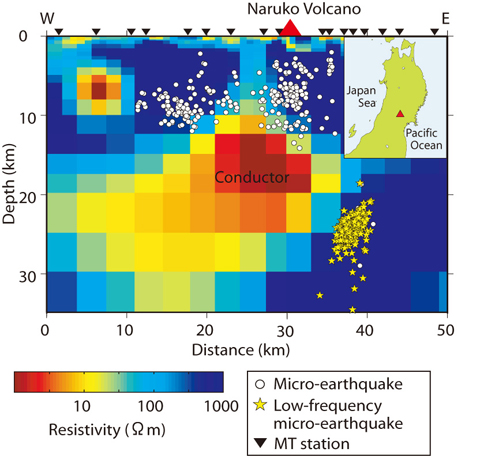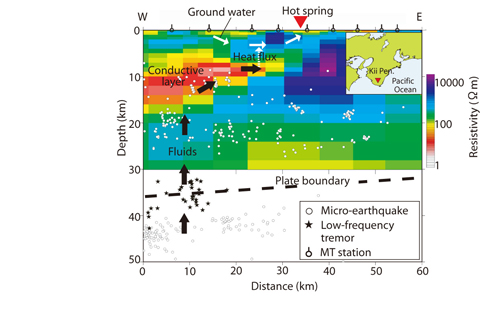
Fig.2-12 Two-dimensional resistivity model beneath Naruko Volcanic region in Japan

Fig.2-13 Two-dimensional resistivity model beneath southern Kii Peninsula, Japan
Volcanism is one of the most important factors affecting the long-term stability of a geological disposal system, because the intrusion and eruption of magma could cause a dynamic destruction and subsidence of basement rocks. Therefore, development of geophysical approaches for detecting magmas and/or high temperature fluids has been carried out to evaluate the possibility of renewed volcanism in any given site. With this purpose, we characterized the subsurface structure beneath the Naruko volcano (active volcano) and the southern Kii Peninsula (active geothermal area in a non-volcanic region) using magnetotelluric (MT) soundings.
Electrical conductivity is the physical property most sensitive to the configuration of aqueous fluids and/or magmas. Fig.2-12 shows the best fit resistivity model of the crust beneath the Naruko Volcano. An anomalous conductive body (< 10 Ωm) is clearly visible at a depth of 10-30 km beneath the volcano. The cut-off depth of micro-earthquakes generally coincides with the upper boundary of the conductor, implying that the temperature of the conductor is higher than 400°C. These results indicate that this conductor is due to the presence of partial melts in the crust. In other words, MT soundings can be a powerful tool for detecting magma and related fluids in the crust and upper mantle.
It has long been recognized that the Kii Peninsula is peculiar for a non-volcanic region, with anomalously high heat discharge values similar to those from hot springs in volcanic regions. According to the magnetotelluric soundings in this region, there is a conductive layer in the upper crust (Fig.2-13). The occurrence of micro-earthquakes and low-frequency tremors reveal that the conductive layer is caused by the presence of aqueous fluids derived from the subducting Philippine Sea plate. The high temperature hot springs in this region may be due to heat flux discharged from aqueous fluid in the upper crust.